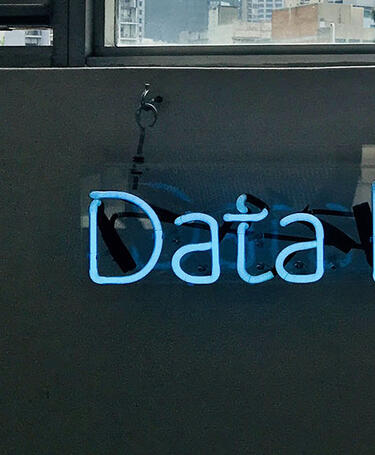
Artificial Intelligence: A powerful tool for quality professionals
Progress indicator

Chiamaka Igwe, Quality Assurance Supervisor at Emzor Pharmaceutical Industries, explores how the quality profession can utilise artificial intelligence.
In this digital era, artificial intelligence (AI) has become increasingly popular in the workplace. AI has led to the transformation of different sectors including manufacturing, health and the automotive industries. According to research by Narrative Science and National Business Research Institute, 71% of 195 top senior executives surveyed said their company has an ‘innovation strategy’ to drive investments in new technologies like AI.
AI, as the name implies, describes the ability of machines to imitate human intelligence. It consists of technologies and algorithms such as machine learning, image recognition, speech recognition, and natural language processing that helps humans perform tasks faster, more easily and efficiently. AI has improved decision-making, reduced operational costs, increased efficiency and revenue and improved customer experience in many businesses.
To the quality professional, AI can be a powerful tool. Quality leaders can focus on the critical aspects of their job that require human skills – leaving the routine aspects to machines.
Some areas that AI can be applied to in quality include:
Quality control
Computer vision and machine learning algorithms can be used to automate the routine task of detecting defects. These technologies can detect quality issues using cameras more sensitive than the human eye and improve operational processes to address them by accessing and analysing data in real time.
Audit and compliance
Quality leaders can leverage AI to effectively tackle the challenges of compliance in the digital age. They can achieve this with robust, real-time monitoring and unconformity detection, as well as automated response mechanisms. Speech and natural language processing can also be employed to reduce the audit cycles, creating enough time for better decision-making and determining corrective actions for detected compliance problems.
Predictive analytics
AI techniques can help quality professionals to create accurate forecasts. By leveraging deep learning technology, they can proactively predict the voice of the customer – enabling them to meet both the implied and emergent needs of customers.
Employee training
Training for employees can be made interesting and more efficient with machine learning. Adoption of machine learning algorithms can lead to improved instructional content, personalise performance coaching and provide better visual and auditory feedback. Some industries have adopted this technology. One example is Air Methods, a medical transport company that is using a cloud-based AI platform called Amplifire to identify the level of a trainee’s skills and offer adapted tests consisting of multiple-choice questions and quizzes. This leads to personalised and efficient training.
Supply chain
With AI, we can have an optimised supply chain as algorithms can be used to detect and learn patterns of demands for products across time and geographic markets. This can lead to automatic adjustments to changing conditions and disruptions like extreme weather events.
In the health sector, AI technologies are speeding up the diagnosis and monitoring of patients. IBM's AI- based system ‘Watson’ was able to diagnose a rare form of leukemia in a patient in Japan in a very short time when compared to the average time it takes for a doctor to form a diagnosis. Watson leverages AI to extract unstructured data from peer-reviewed literature to continually grow its knowledge base. Medical startup Sense.ly has also developed a digital nurse, Molly, to monitor patient’s condition.
Advances in AI have contributed immensely to the growth of the automotive industry. One example is the creation and evolution of self-driving cars. There are over 30 companies utilising AI in the creation of driverless cars including Tesla, Audi, Cadillac, Volvo, Apple and Google, to reduce the risk of crashes and to help disabled people. The banking sector has also adopted the power of machine learning for effective data analysis and fraud detection.
Implementing AI in the workplace
AI can handle routine tasks across the organisation, freeing up people in HR, IT, and customer service departments to focus more on creative work. For example:
Automated administrative tasks: AI virtual assistants such as X.ai and AlSense can be used to automate administrative tasks such as scheduling and transcribing meetings, enabling people to focus on essential tasks that require creativity and ingenuity.
Communication and support: Cloud-based machine-learning can be used to improve communication between many branches. Data collected within a branch can be interpreted and shared easily with other branches. AI powered translators like Skype Translator can be used by employees who speak different languages to easily understand each other. Also, IT support teams can leverage chatbots such as Spoke to reduce interruptions from repetitive requests.
Data analysis and data protection: With AI tools like Thoughtspot, you don’t have to be a data scientist to analyse data. You can scan through complex data and extract insights just like data scientists. Machine learning can also be used to strengthen cyber security.
Human Resources: AI powered tools such as Palentine Analytics, Montage and Textio can be used by HR managers to improve the hiring process and measure employee performance.
Customer service: AI powered chatbots such as Kayak’s chatbot for Messenger can be used for effective customer services. It can learn from real customer service representatives and is able to answer question as a knowledgeable person.
Disadvantages of using AI
Although AI has several advantages, it also has its disadvantages:
AI technologies cost a lot of money and resources to build, maintain and repair.
With so much assistance from machines, humans can become overly dependent on AI and lose their creative abilities.
Many jobs especially those involving routine activities will be lost as they will be replaced with robots. However, research conducted by PwC has also shown that AI will generate new jobs. Machines still require the oversight of humans that will continue to train and improve the algorithms. This has led to the creation of AI-based jobs such as Smart-Machine Interaction Modeler, Context Designer, World View Trainer, and Automation Economist.
The future
With the rapid growth and maturation of AI, organisations and professionals should start thinking of ways to adopt this technology in their various organisations. This can be achieved by:
- Defining goals:Companies have to clearly state what they intend to achieve with AI technology, identifying areas they would want to automate or augment with AI technology.
- Selecting AI platforms: Companies can collaborate with AI solution providers to select the appropriate platform to suit their needs and invest in its implementation.
- Training of employees: Companies can’t fully adopt AI technology without skill building for employees working alongside it. Employees should be trained through certifications and online courses before AI to enable them to understand the technology and recognise how it can be integrated into everyday operations.
It’s time for quality professionals to identify the opportunities for their organisation. How will you use AI?
Chiamaka Igwe is Quality Assurance Supervisor at Emzor Pharmaceutical Industries